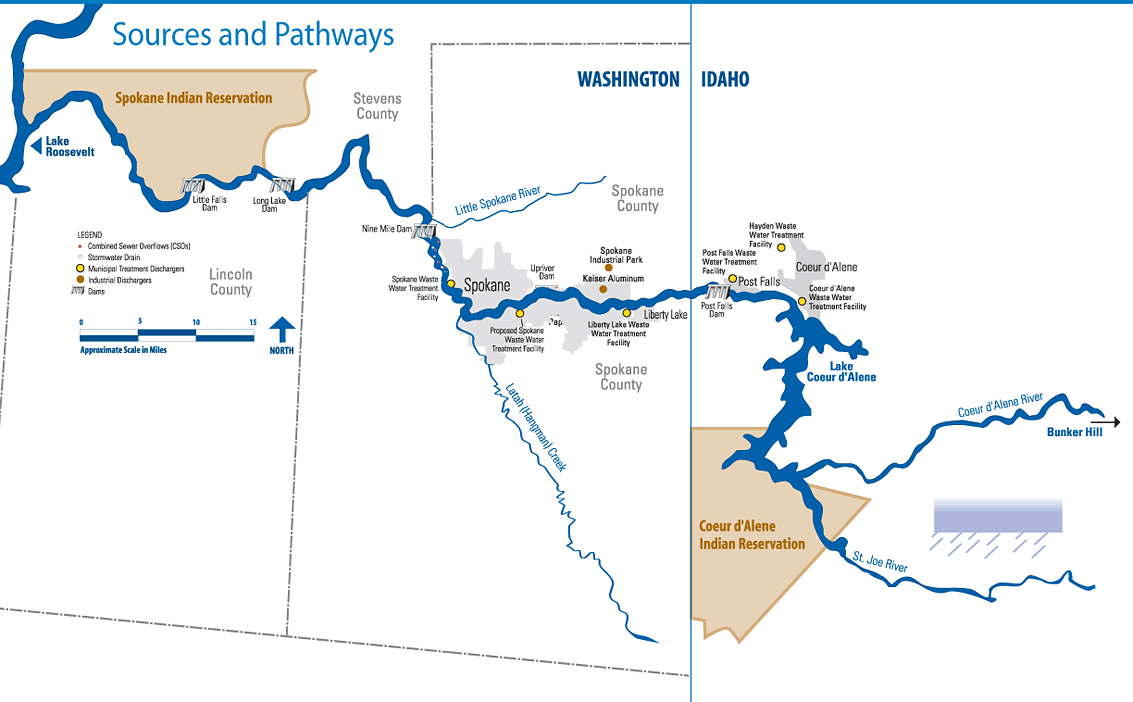Sources and Pathways
Click image above to enlarge, or download a printable pdf.
Stormwater and Combined Sewer Overflows
The City of Spokane has over 700 miles of storm drains and sewer drains. Stormwater drains take urban runoff from rain and snow and discharge it into the ground or directly into the Spokane River. There are 130 storm drain outfalls into the river. Sewer drains carry wastewater from homes and businesses to a wastewater treatment plant. At times, primarily during large storm runoff events, wastewater that is not treated at the city’s treatment plant discharges directly into the Spokane River from 22 combined sewer overflow outfalls.
Air
Chemicals from hundreds to thousands of miles away can travel as particulates in the air, eventually coming back down to earth. This type of atmospheric fallout can be concentrated in particular locations. For instance, fallout in the St. Joe, St. Maries and Coeur d’Alene river basins may be particularly high, enabling contaminants to migrate through Lake Coeur d’Alene and into the Spokane River.
Industry and Municipal Treatment
The Clean Water Act requires permits in order to discharge pollutants directly into the Spokane River. Called the National Pollutant Discharge Elimination System (NPDES), permits for the seven existing municipal and industrial dischargers are being reviewed as part of a renewal process. Although regulated and treated, some pollutants still enter the river. The proposed waste water treatment facility for Spokane County must also gothrough the NPDES permitting process.
Upstream Mining Legacy
Heavy metals from over one hundred years of mining in the Coeur d’Alene Basin travel downstream to and through Lake Coeur d’Alene. Most metals settle on the lake bottom while others flow into the Spokane River. Flooding causes the most movement of metals downstream.

